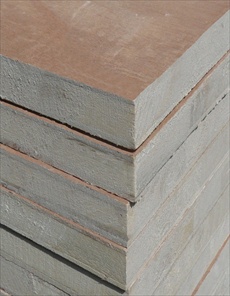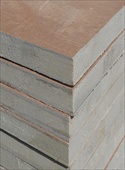
|
Indonesian / Chinese Blockboard is constructed with a core of softwood blocks / strips (approximately 25mm – 28mm wide and varying lengths) which are glued together edge to edge. A face veneer is then glued on both the front and back of this matrix of blocks, to create the final product. If a sheet of Blockboard is manufactured as described above, it will sometimes be referred to as 3 ply Blockboard, however you can also have Blockboard were it has 2 veneers per side and this is referred to as 5 ply Blockboard. One of the advantages Blockboard used to have, that it was lighter in weight than its plywood counterpart. In recent years though, this advantage has changed due to the increase use of plywood’s, primarily from China that use poplar timber as their core material. Another advantage people have referred to, is if you have to span a long distance (for example: constructing a book shelf.) As the inner cores are made of strips of softwood blocks they tend to be stiffer than plywood can be at times. (Obviously the blocks have to run lengthways, to achieve their maximum strength) One minor disadvantage Blockboard is known for, because the core material is made up of these softwood blocks. If these are not butted squarely together, then a small core gap can be created. And if you’re unfortunate enough to try and screw through the face (unable to see this core gap) and hit one of these, then the grip a screw can achieve is obviously reduced. But from our customer’s feedback over the years, this seems to happen on very rare occasions. It is also important to remember that all Blockboard sheet materials are intended for interior use only. And the same consideration to seal the product using the correct paint, lacquer etc. applies to Blockboard, same as any plywood sheet material. Some common uses for Blockboard: Tables, Doors, shelving, veneered panelling, kitchen carcasses
|








